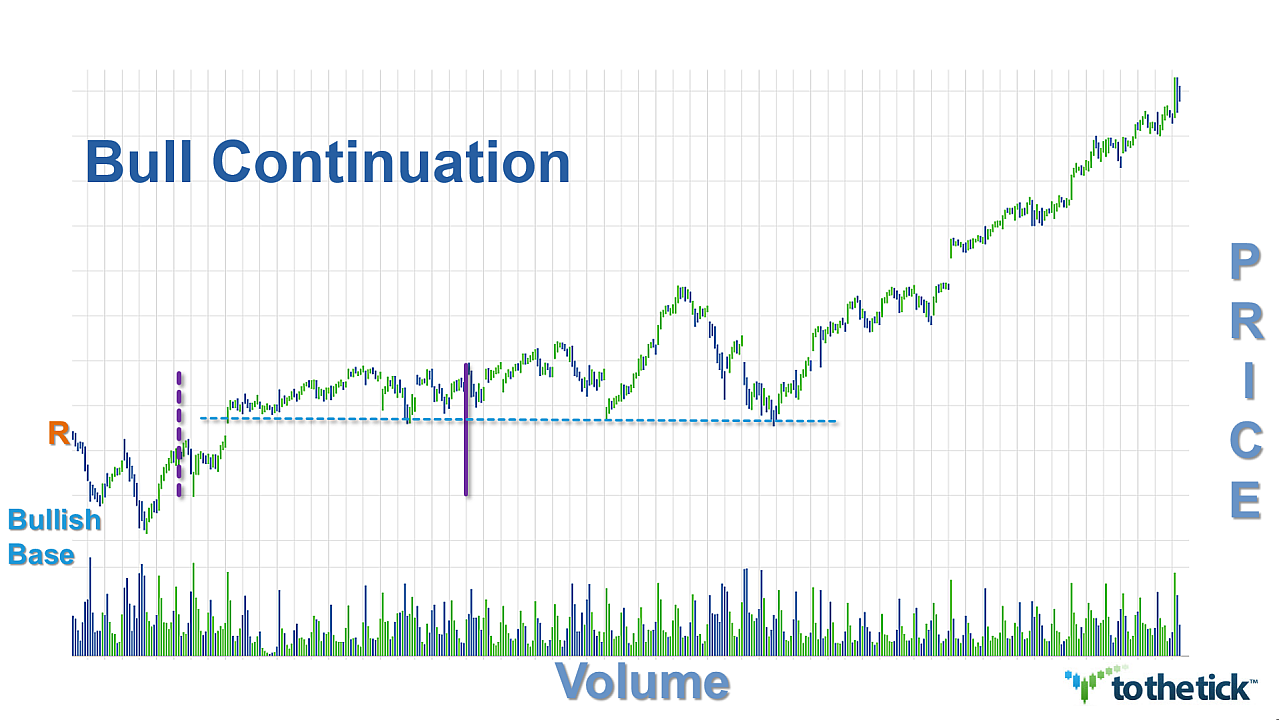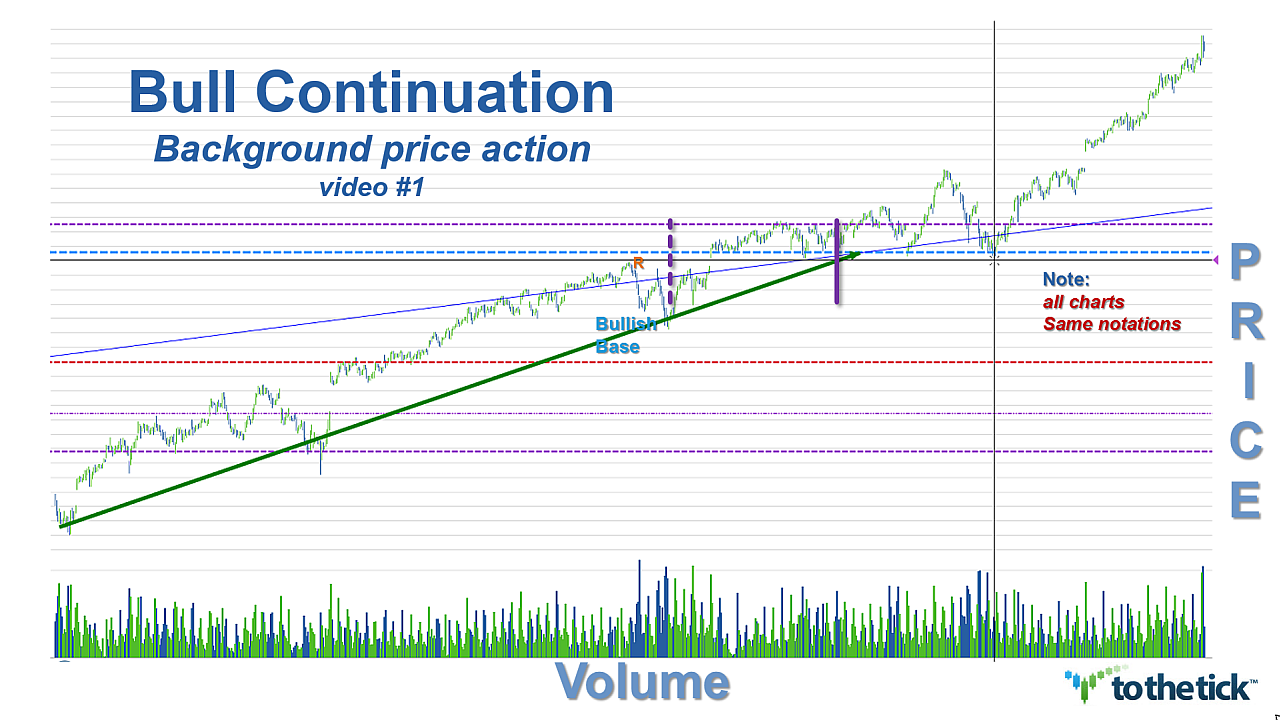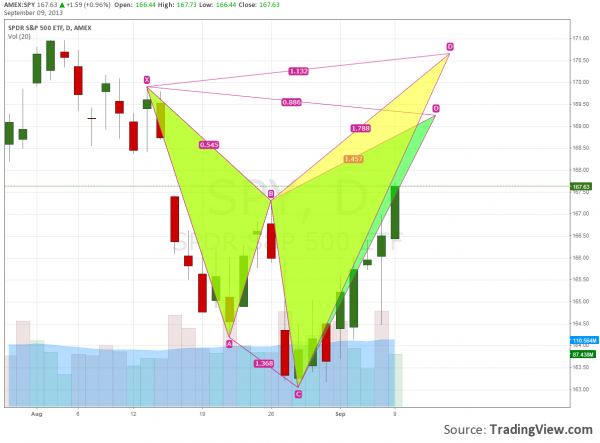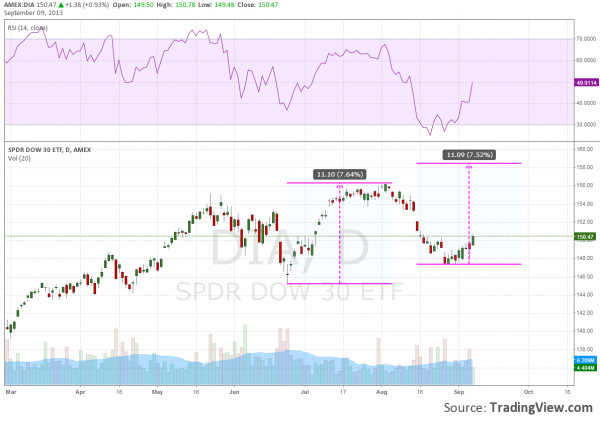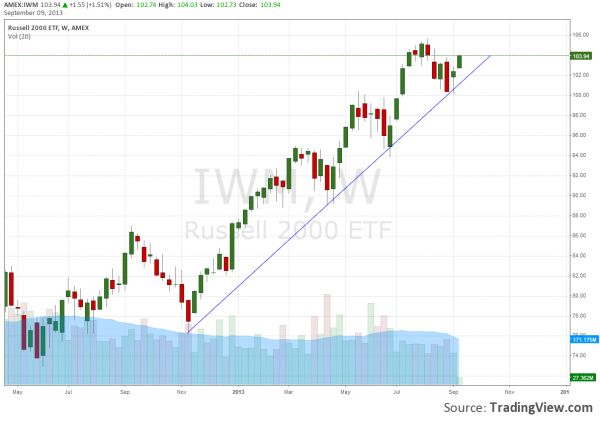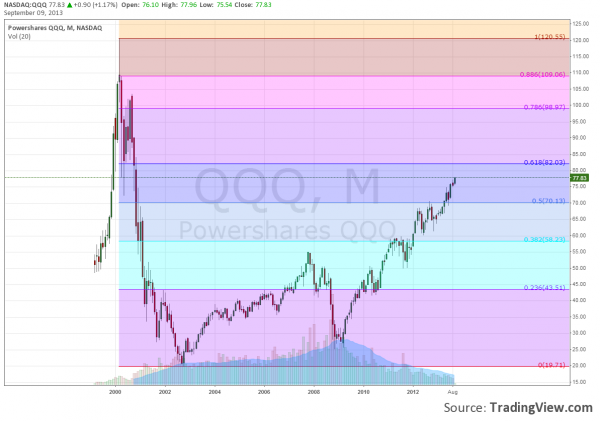by Pater Tenebrarum
Targets, Shmargets
Bloomberg's editors have produced yet another confusing headline (whoever is responsible for these headlines should probably consider a career at the Onion):
“Spain’s Deficit Struggle Shows Threat to ECB Rally”.
Huh? What's an 'ECB rally'? It turns out they mean the rally in bond markets allegedly caused by the ECB's interventions, respectively intervention threats. One should of course never make the mistake of underestimating central banks – after all, they can print money in unlimited amounts. The idea that the rebound in peripheral bonds is entirely due to the ECB strikes us however as an overestimation of the central bank's power, combined with a dash of 'post hoc, ergo propter hoc' fallacy. Central banks are certainly powerful entities in terms of their influence on financial markets, but they are not omnipotent.
We believe the rallies in the government bonds of Spain and Italy specifically were mainly caused by the following factors: an easing of balance of payments related strains (as evidenced by a slight contraction in TARGET-2 imbalances), in Spain's case a marked decline in unit labor costs, and in the case of both countries massive buying of the government's debt by commercial banks that are playing the ECB funded carry trade. The latter started right after former French president Sarkozy was heard recommending the tactic as an aside at one of the many EU emergency summits. This indicates that the surge in bond buying was the result of some sort of sub rosa 'you scratch my back and I'll scratch yours' agreement between the banks and the governments of their host countries. For instance, Italy's government transformed many otherwise ineligible bank securities into ECB-pawnable paper by sanctifying them with a 'state guarantee'. And promptly, tit for tat, the banks started buying Italian paper en gros – certainly a suspicious coincidence.
Anyway, Bloomberg lets us in on the fact that to no-one's particular surprise, Spain is going to miss its fiscal targets yet again:
“Spain’s bid to meet its budget-deficit target for the first time in five years is running into trouble, fueling concerns that increased financial stability is masking deeper economic problems.
The shortfall for the central government in the first seven months of the year was 4.38 percent of Spanish output, compared with a 3.8 percent goal for the year, government data show. Economists at the savings banks’ foundation Funcas, Mizuho International and Bank of America Merrill Lynch said Spain may miss the European Union’s overall goal for this year of 6.5 percent as benefit spending climbs and tax income falters.
[…]
“Probably influenced by crisis fatigue and criticism of European austerity policies, the European Commission has overlooked the lack of progress this year in some structural reforms and the deficit,” said Ruben Segura-Cayuela, a former Bank of Spain economist who works at Bank of America Merrill Lynch in London. “The key question is whether rating agencies will also look the other way.” He forecasts a 7 percent deficit this year.”
[…]
Prime Minister Mariano Rajoy is struggling to cut Spain’s deficit after raising levies on income, savings and property since taking office in December 2011. Last year, he increased the sales tax, with the main rate rising by 3 percentage points to 21 percent, and he reduced corporate-tax deductions in July.
“We expect to end the year meeting the deficit target for the public sector overall,” Deputy Budget Minister Marta Fernandez Curras said in an e-mailed response to questions. Spain’s reforms are likely to “produce a greater increase in revenue in the last part of the year,” she said.”
(emphasis added)
Hasn't the crisis just been 'officially called off'? Prime minister Rajoy is 'struggling'? It seems to us that the people who are really struggling in Spain are its much oppressed tax payers. We highlighted the method by which Spain's and other European austerity plans are put into effect above: raising taxes is the preferred modus operandi, and that is why EU austerity keeps not working.
There are indeed 'deeper economic problems'. The promised structural reforms are implemented at a snail's pace and are going nowhere near far enough. Government has continued to grow, even while the overall economy has shrunk. If anything, government should have been shrinking at a faster pace than the economy, which would have allowed it to cut rather than hike taxes. Pertinent historical examples of how to best implement austerity do exist: US president Harding demonstrated how it's done in 1921, and so did the Baltic states after 2008. Even in these cases a more effective implementation would have been possible, but the fundamental approach was the correct one: shrink government as fast as possible and repeal as many regulations standing in the way of business as you can. Bail out no-one. Grit your teeth and allow for a steep short term downturn, knowing that a sound foundation for renewed growth will be established. Obviously this is not how things were done in Spain, Italy Portugal or Greece (which will require yet another bailout – the third - later this year).
 Spain's 10 year government bond yield – click to enlarge.
Spain's 10 year government bond yield – click to enlarge.

Target-2 imbalances in the euro system – getting better, but still at levels far removed from the small fluctuations of the pre-crisis period – click to enlarge.
Italy's Finances Said to Be 'Slipping'
Reuters reports that Italy's public finances are 'slipping'. That makes it sound as though this were a new discovery, but that is actually not so. Italy's public finances have been 'slipping' forever, without respite. If one carefully reads the excerpt below, it becomes clear that Italy was only removed from the EU's 'blacklist' of fiscal offenders on the basis of its official 'fiscal target', and not due to actually delivering better numbers.
“Italy, which three months ago got off the European Union's blacklist of countries with excessive fiscal deficits, may be put straight back on it next year unless it can reverse a worrying trend in its public finances.
Enrico Letta's government has been forced to respect the tax cutting promises of Silvio Berlusconi's People of Freedom Party (PDL), a vital part of the ruling coalition, while a deeper than expected recession is also weighing on state accounts.
Yet with Berlusconi's allies now threatening to bring down the government, growing political instability and wayward public finances risk creating a toxic combination that puts Italy back at the center of financial markets' attention.
Data this week showed the state sector borrowing requirement amounted to 60 billion euros at the end of August, almost twice as large as the 33 billion euro deficit in the same period of 2012.
The SSBR does not fully correspond to the broader "general government" deficit the EU uses to assess countries' fiscal performances, but it still suggests there may be a need for significant belt-tightening before the end of the year, something a fragile government may find hard to deliver.
Italy is targeting a general government deficit of 2.9 percent of output, just a fraction below the EU's 3 percent ceiling after the deficit was bang on 3.0 percent in 2012. On the basis of this target, set in April, the EU Commission removed Italy from its Excessive Deficit Procedure, allowing it some extra leeway for public spending.
However, since April Italy's economy has gone from bad to worse and the contraction then forecast at 1.3 percent is now seen at close to 2 percent, hurting tax revenues and pushing up the deficit as a proportion of gross domestic product.
Citigroup analyst Giada Giani said the last time the SSBR was so high at the end of August was in 2009, when the general government deficit came in at 5.5 percent of GDP.”
(emphasis added)
So Italy's most recent public borrowing requirements for August were twice those of the same period in 2012? Let's see what happened to Italy's public debt in 2012. Its net debt rose by more than 82 billion euro from 1.884 trillion to 1.966 trillion euro, a jump by 7 percent as a percentage of GDP:
 Italy's net government debt in euro terms: up another 82 billion in 2012 - click to enlarge.
Italy's net government debt in euro terms: up another 82 billion in 2012 - click to enlarge.
 Italy's public debt as a percentage of GDP – click to enlarge.
Italy's public debt as a percentage of GDP – click to enlarge.
In June of this year, the Bank of Italy reported that the total public debt of Italy had risen to a new record high of 2.075 trillion euro (note this was before its borrowing requirements for the month of August doubled vs. 2012):
“Italy‘s public debt reached in June 2013 to a record $ 2.075 trillion euros, according to the Italian Central Bank.
Thus, according to the data given in the statistical bulletin of the Bank of Italy, the growth of state debt has slowed significantly in June and compared to May amounted to only 600 million euros. In general, for the first six months of 2013 the national debt rose by 86.5 billion euros.
Reducing the rate of increase of debt of Italy explained by the significant increase in tax revenues, which in June amounted to 46.3 billion euros, 21.5% more than in June 2012.”
(emphasis added)
The rise of 'only' 86.5 billion euro can probably be explained by the fact that this refers to the gross number (it would have been 109 billion euro compared to the net debt total for 2012 shown above) . Other than that, this press release raises an obvious question, namely: WTF are they talking about? What 'slowdown in debt growth'? Total public debt has already grown more in the first half of the year than in all of 2012!
In any case, the main point we wish to make is that the proper headline for the Reuters article would have been: 'Italy's finances are now slipping even faster'. They never stopped 'slipping'. In 2013, Italy's government is slated to issue 460 billion euro in new debt including refinancing requirements. The eurocrats better hope that the markets don't decide to make a fuss over this recent slight 'slipping' with respect to the fiscal target. If we simply extrapolate the first half number for all of 2013, then Italy's total public debt will rise by 193 billion euro this year, or almost 10%. Recent estimates that the debt-to-GDP ratio will slightly exceed 130% may therefore prove to be overoptimistic.
It should be noted at this point that the widely hailed 'success' of Mario Monti's reforms was largely a successful PR exercise. Nearly every measure implemented by the lifelong bureaucrat was a mistake of monumental proportions. The planned deficit consolidation relied mainly on the imposition of additional taxes in the middle of a recession. Obviously, government has continued to grow in the process. The structural reforms implemented by Monti's government, especially those of Italy's byzantine labor regulations, were de minimis. As a result, Italy has the by far worst record in terms of unit labor cost improvements in the periphery (in fact, there has been no improvement in Italy's case). All in all, Monti's so-called reforms were a complete failure . Here is a list of Italy's key economic and debt data, including several fantasy estimates for 2013:
 Italy, key data including estimates for 2013 that are essentially pure fantasy. Especially noteworthy is the fact that unit labor costs have so far utterly failed to decrease – click to enlarge.
Italy, key data including estimates for 2013 that are essentially pure fantasy. Especially noteworthy is the fact that unit labor costs have so far utterly failed to decrease – click to enlarge.
Meanwhile, Italian bond yields appear to have produced a classical inverted head & shoulders bottom, complete with a price/RSI divergence at the lows:
 Italy's 10 year government bond yield – an inverted head and shoulders bottom? - click to enlarge.
Italy's 10 year government bond yield – an inverted head and shoulders bottom? - click to enlarge.
Conclusion:
Perceptions about the euro area's debt situation may have changed, but nothing has changed in reality. The countries the markets were extremely worried about when both their absolute debt levels and their debt-to-GDP ratios were still much lower, continue to pile up public debt at a rapid pace. As we mentioned at the beginning of the year, all the usual suspects will miss their 'fiscal targets' by a mile.
Addendum: Portugal
Below is a daily chart of Portugal's 10 year government bond yield. It appears the markets continue to expect a worsening of the already quite tense debt situation. Recently the Portuguese supreme court struck down yet another government measure aimed at lowering the expenses for the country's bureaucracy.
“Portugal's highest court has ruled that the government's plan to make it easier to sack public servants is unconstitutional. The court said the measures contravened state job safety guarantees.
It is a set-back for Portugal's policy of reducing government spending in the wake of an international bailout. The government has promised creditors a big reduction in its budget deficit. Other austerity measures have already been rejected by the same court.
The bill was seen as important because of its potential longer-term structural effect on spending cuts, Reuters news agency reports.”
(emphasis added)
The government may be bankrupt, but it still cannot sack any civil servants! This appears to be an example of one set of bureaucrats protecting another. 'Job safety guarantees'? Whoever came up with those guarantees was of course buying votes – and this is the result. What financial guarantees can a bankrupt government really be expected to uphold? In the end, even more tax hikes will likely be imposed so that the bureaucrats can continue to enjoy their 'job security' and the economic downward spiral will predictably intensify. European welfare statism has really reached the end of the road, even if many people still fail to acknowledge it.
 Portugal's 10 year government bond yield, daily: rising again after the latest supreme court rejection of the government's plans to slash spending on the bureaucracy – click to enlarge.
Portugal's 10 year government bond yield, daily: rising again after the latest supreme court rejection of the government's plans to slash spending on the bureaucracy – click to enlarge.
See the original article >>







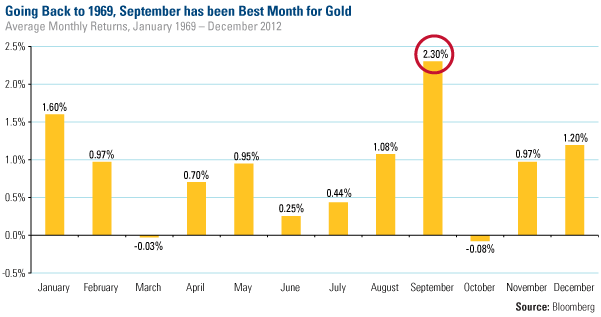
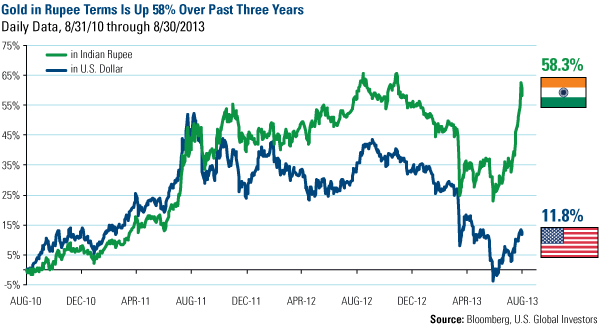

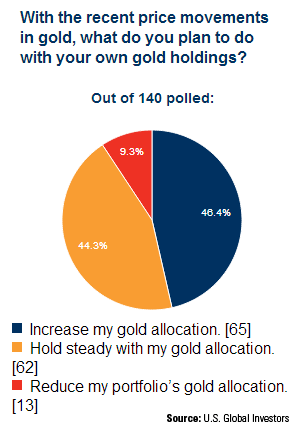 The survey also shows that there are not too many gold bears in the East. Only 11 percent of those who responded in July think the price will decrease.
The survey also shows that there are not too many gold bears in the East. Only 11 percent of those who responded in July think the price will decrease.